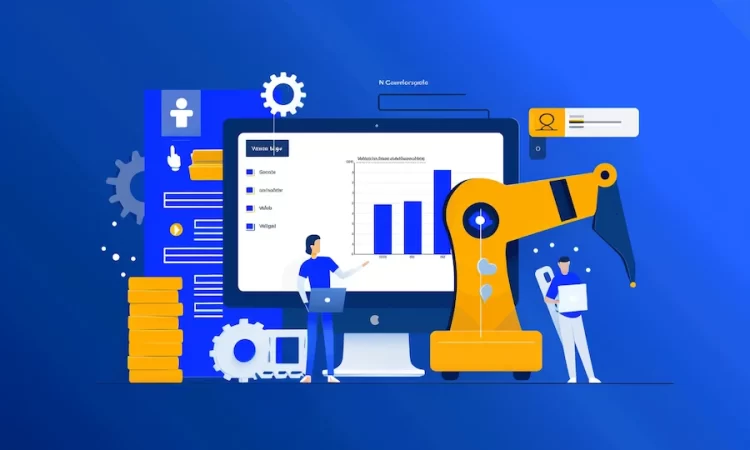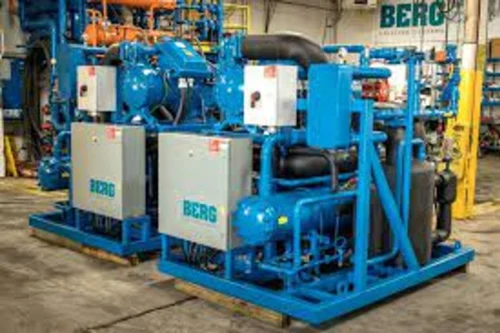
Running a business involves a lot of processes, many of which are repetitive and time-consuming. From managing customer data to handling sales workflows, these tasks can easily eat up your time and resources.
But what if you could automate most of these processes without needing to hire a developer or build complex software from scratch? That’s where no-code platforms for business process automation come in.
No-code platforms allow you to automate key business processes—like sending emails, updating databases, and tracking sales—without needing any technical skills.
This means you can streamline your operations, improve efficiency, and free up time for more strategic tasks.
In this guide, we’ll dive into how you can use no-code platforms to automate your business processes and why it’s a game changer for entrepreneurs and small business owners.
What is Business Process Automation?
Business process automation (BPA) refers to using technology to execute recurring tasks or processes in a business where manual effort can be replaced.
This automation helps improve efficiency, reduce errors, and allow you to scale your operations more easily.
With no-code platforms, you can build workflows that automate these processes without writing a single line of code.
Whether it’s automating customer service responses or managing employee onboarding, no-code tools make it possible for non-technical users to implement powerful automation.
For example, you could create a workflow that automatically updates your CRM whenever a customer makes a purchase, sends a thank-you email, and adds their details to a Google Sheet for future marketing efforts.
Why No-Code Platforms Are Perfect for Business Process Automation
No-code platforms are designed for people who want to automate their processes quickly and affordably, without needing extensive technical knowledge. Here’s why they’re perfect for business process automation:
- Ease of Use: No-code platforms use drag-and-drop interfaces, making it easy for anyone to create workflows and automate tasks.
- Cost-Effective: Hiring a developer to build custom automation can be expensive. No-code platforms offer an affordable alternative, allowing you to build and manage automations yourself.
- Faster Deployment: No-code solutions allow you to set up automation quickly. Instead of waiting weeks or months for a custom solution, you can create automated processes in days or even hours.
- Scalability: No-code tools grow with your business. As your business expands and your processes become more complex, you can easily adjust or scale your automation.
If you’re looking to get started with business process automation, choosing the right no-code platform is the first step.
Top No-Code Platforms for Business Process Automation
There are several no-code platforms available, each with its own strengths depending on the type of automation you need. Below are some of the best options for automating your business processes:
1. Zapier
Zapier is one of the most popular no-code automation tools. It allows you to connect over 2,000 apps and services, automating workflows across different platforms.
For example, you can set up a “Zap” that automatically adds new email subscribers to your CRM, sends a welcome email, and updates your project management tool with the new lead.
- Use Case: Automating tasks between different apps like Gmail, Google Sheets, Trello, and Slack.
- Best For: Small businesses and entrepreneurs who want to automate repetitive tasks easily.
2. Integromat
Integromat is similar to Zapier but offers more advanced customization for complex workflows. You can create automations that involve multiple steps and conditional logic.
For example, you can set up a workflow that automatically generates a report when specific criteria are met, sends it to your team, and stores it in a cloud service.
- Use Case: Creating multi-step workflows that require conditional logic.
- Best For: Businesses that need more complex automation setups.
3. Airtable
Airtable combines the simplicity of a spreadsheet with the functionality of a database. It’s perfect for managing projects, tracking data, and automating workflows.
You can use Airtable to set up triggers that notify team members when tasks are completed, send updates to clients, or generate reports automatically.
- Use Case: Automating project management, inventory tracking, or client onboarding processes.
- Best For: Teams that need a flexible database solution with automation capabilities.
For more options, you can explore this no-code tools directory, which lists a wide range of no-code platforms that can be used for automating various business processes.
How to Choose the Right No-Code Platform for Your Business
Choosing the right no-code platform depends on your specific business needs. Here are a few things to consider when selecting a platform:
1. Identify Your Automation Needs
Before choosing a platform, make a list of the processes you want to automate. Are you looking to automate customer communication, manage sales workflows, or streamline internal operations? Understanding your needs will help you pick the platform that’s best suited to handle those tasks.
2. Integration with Other Tools
Most businesses already use a variety of tools, such as email platforms, CRMs, and accounting software.
Make sure the no-code platform you choose integrates with the tools you’re already using. For example, if you’re using Google Sheets for data tracking, make sure your platform can easily connect with it.
3. Scalability
As your business grows, your automation needs will likely become more complex. Choose a platform that can scale with your business.
Some platforms, like Bubble, allow for advanced customization and can handle complex workflows as your needs evolve.
If you’re building something more complex and scalable, you can work with a Bubble app development agency to ensure your automations are set up correctly and can grow with your business.
Best No-Code Platforms for Building Scalable Web Apps
If you’re looking for a no-code platform to automate your web app processes, platforms like Bubble, Adalo, and Webflow are excellent options.
These platforms allow you to build scalable web apps with advanced automation features, making it easier to manage workflows, handle data, and interact with customers.
You can check out this guide on the best no-code platforms to build scalable web apps to find the right tool for your business.
Tips for Implementing No-Code Automation
Once you’ve chosen a platform, here are a few tips to ensure your business process automation runs smoothly:
1. Start Small and Scale Gradually
You don’t need to automate everything at once. Start by automating one or two processes, such as email follow-ups or data entry, and then expand as you become more comfortable with the platform.
2. Test Your Automations Regularly
Automation is great when it works, but it’s important to test your workflows regularly to ensure everything is running as expected. Set aside time to review your automations and make any necessary adjustments.
3. Collect Feedback from Your Team
If you’re automating internal processes, make sure to gather feedback from your team. They’ll be the ones using the system daily, so their insights can help you improve your workflows and make the automation more effective.
Conclusion
No-code platforms are transforming the way businesses operate, allowing entrepreneurs and small business owners to automate key processes without the need for technical skills.
Whether you’re looking to save time, reduce errors, or scale your operations, no-code tools offer a simple and cost-effective solution.
By choosing the right platform, such as Zapier for simple automations or Bubble for more complex workflows, you can automate repetitive tasks and focus on growing your business.
If you’re ready to streamline your operations, consider exploring the no-code tools directory or working with a Bubble app development agency to create a tailored automation solution for your business.
With the right no-code platform in place, you’ll be able to improve efficiency, reduce costs, and focus on what matters most—scaling your business.




